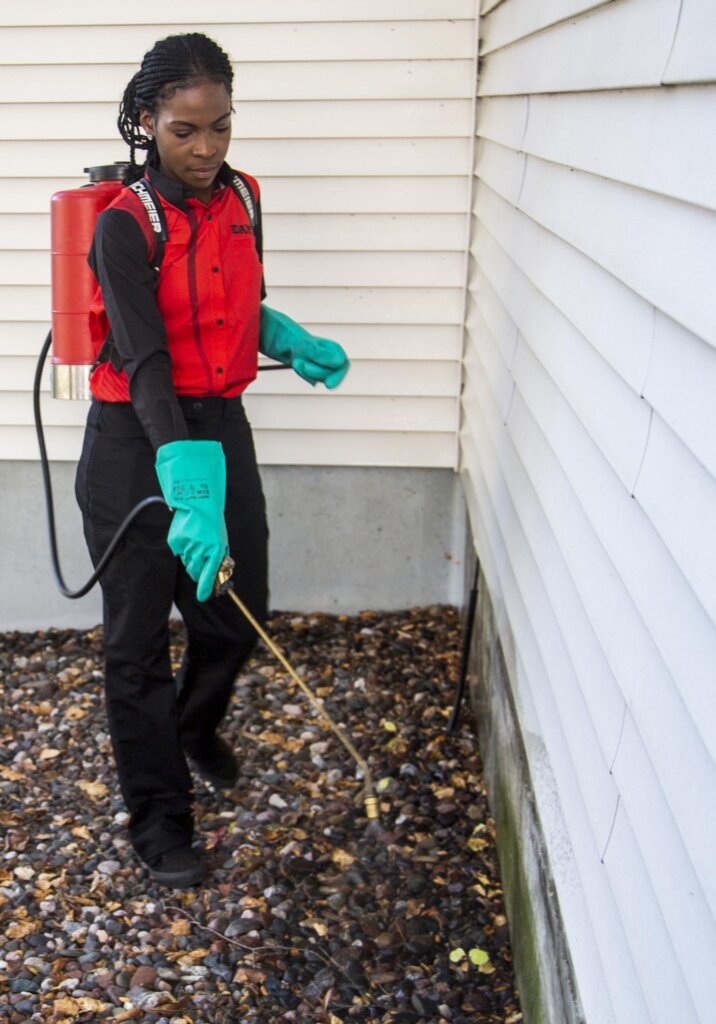Checking Out Infestation and Therapy Techniques in the World of Parasite Control
The landscape of pest control encompasses a myriad of difficulties, specifically as problems of common home bugs proceed to advance. By integrating preventive steps with sophisticated monitoring strategies, such as Integrated Pest Management (IPM), property owners can better secure their atmospheres.

Usual Household Pests
When it concerns managing our space, comprehending typical family parasites is critical. These bugs not just interrupt our comfort however can likewise position health and wellness dangers and damage home. One of the most common home insects include ants, cockroaches, rodents, termites, and bed pests.
Ants, often seen foraging in kitchens, can infect food and develop big nests. Cockroaches, known for their resilience, can cause allergic reactions and spread microorganisms. Rodents, including computer mice and rats, can create architectural damage and carry conditions like hantavirus and salmonella. Termites, usually described as "silent destroyers," can compromise the honesty of wood structures, leading to pricey repair services. Bed bugs, although not disease service providers, can trigger significant pain with their bites and bring about emotional distress.
Recognizing the indications of these pests, such as droppings, nests, or attack marks, is vital for early intervention (Pest Control Lockhart). Appropriate hygiene practices, sealing entrance factors, and preserving a clutter-free environment work preventative steps. By recognizing these typical house insects and understanding their habits, homeowners can take positive actions to reduce problems, guaranteeing a much healthier living environment
Comprehending Insect Infestations
Parasite infestations can intensify promptly, turning a small annoyance into a substantial problem if not attended to promptly. Comprehending the nature of these problems is crucial for efficient monitoring. Pests can invade property and business spaces for various reasons, consisting of the look for food, sanctuary, or reproducing grounds. Common elements adding to problems consist of inadequate sanitation, structural vulnerabilities, and seasonal modifications that drive bugs inside.
Recognizing the kind of bug is crucial, as various types display different habits and reproductive rates. Rodents may establish nests in surprise locations while bugs like cockroaches thrive in wet settings. Early detection frequently depends upon identifying indicators such as droppings, chomp marks, or unusual sounds, which can show an issue before it comes to be extreme.
Warm, moist climates can assist in the quick growth of bug populations, while modifications in landscape design or construction can accidentally create favorable settings. An informed method to comprehending these characteristics lays the groundwork for efficient bug monitoring techniques in the future.
Therapy Approaches and Techniques
Effective treatment techniques and strategies are essential for reducing bug problems and restoring a safe atmosphere. A diverse technique is usually best, incorporating chemical, biological, and mechanical techniques tailored to the certain parasite and the extent of the problem.
Chemical therapies include using insecticides and herbicides, which can efficiently eliminate insects. Appropriate application and adherence to security standards are vital to lessen dangers to people and non-target organisms. Integrated Insect Management (IPM) encourages the judicious use chemicals as a last resource, counting rather on tracking and threshold degrees to establish treatment requirements.
Biological control approaches include introducing all-natural predators or check bloodsuckers to decrease parasite populations. This approach is significantly prominent, specifically in agricultural setups, as it promotes ecological sustainability.
Mechanical techniques, such as catches and obstacles, provide instant remedy for bugs without introducing chemicals. Choices include sticky traps for pests or physical barriers for rats.
Ultimately, the selection of treatment technique should think about the specific bug, the environment, and prospective influences on human health and wellness and ecological communities. A balanced mix of these strategies can efficiently take care of infestations while advertising lasting pest control options.
Safety Nets for Residence
Proactively resolving pest problems prior to they rise is vital for preserving a healthy and balanced home setting (Pest Control Lockhart). Executing efficient helpful site preventative measures can considerably minimize the chance of infestations, eventually securing both your property and wellness

Appropriate landscaping likewise plays a vital function in prevention. Keeping shrubs and trees cut away from your house lowers the opportunities of bugs discovering their method inside your home. Additionally, guarantee that drainage systems are operating successfully to avoid standing water, which can reel in mosquitoes and various other pests.
Lastly, regular assessments are a good idea. Frequently checking for indicators of insect activity permits early treatment. By embracing these safety nets, house owners can create a setting that is less hospitable to bugs, thus boosting their general lifestyle and minimizing the need for considerable insect control treatments.
Industrial Parasite Control Techniques
A comprehensive technique to commercial bug control is essential for services intending to preserve a secure and hygienic atmosphere. Reliable techniques entail a combination of routine examinations, employee training, and the application of Integrated Parasite Management (IPM) methods.
Normal evaluations allow very early detection of insect task, enabling timely intervention. Organizations should establish a routine schedule for these evaluations, concentrating on risky areas such as kitchens, storage spaces, and garbage disposal websites. Employee training is equally vital; team should be educated on the indications of bug problems and the relevance of reporting them immediately.
Executing IPM methods assists alleviate parasite concerns sustainably. This consists of environment alteration, such as securing entrance points and reducing clutter, as well as employing natural deterrents before resorting to chemical treatments.

Moreover, collaborating with a certified insect control supplier makes sure accessibility to professional understanding and sophisticated treatment options. This collaboration can cause tailored original site pest control prepares tailored to the certain demands of business, decreasing threats and enhancing total efficacy. Ultimately, a positive and educated strategy cultivates a pest-free setting, safeguarding both public health and business reputation.
Verdict
In final thought, reliable insect control demands a comprehensive understanding of typical household insects and their actions, coupled with targeted treatment techniques. Implementing precautionary procedures alongside treatment methods such as Integrated Parasite Management and biological control improves the capacity to mitigate invasions.